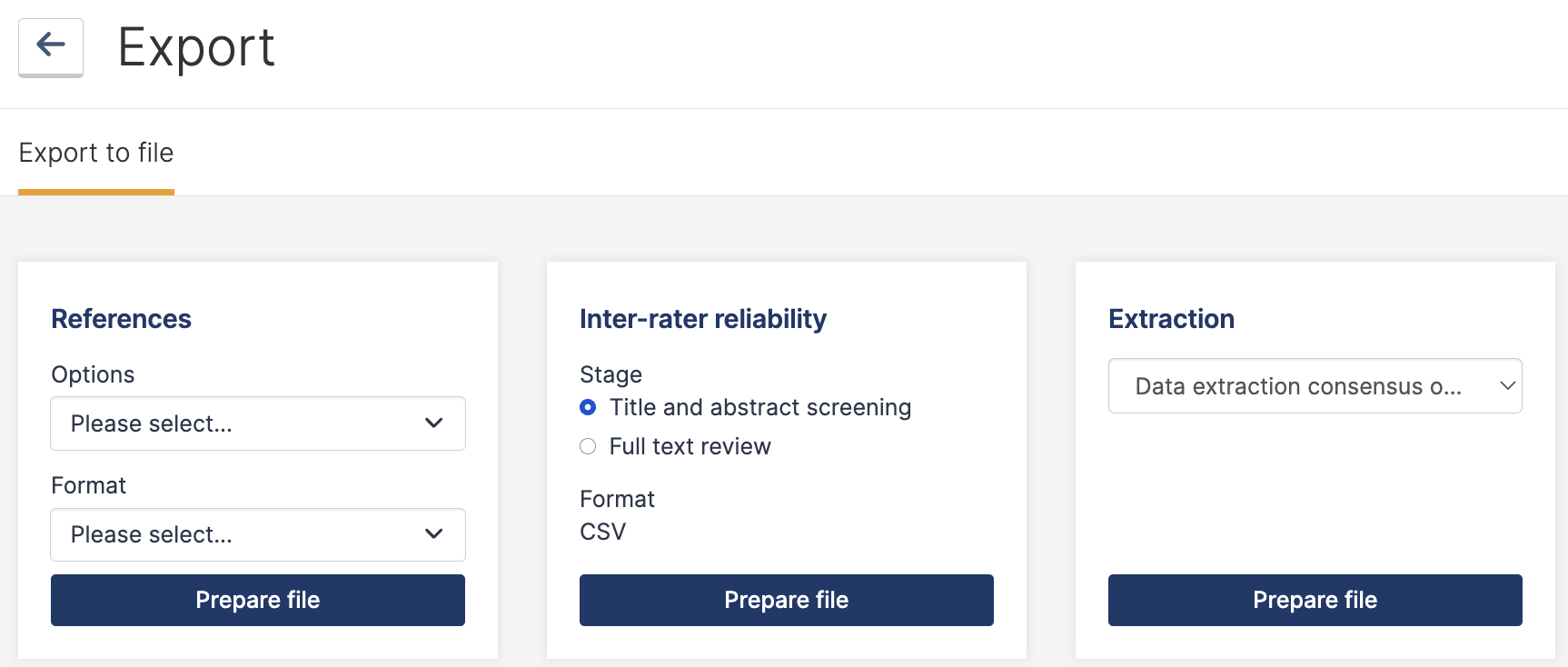Exporting data
How to export study lists to your reference manager
Last updated on 22 Oct, 2025
Our export function generates reference lists according to where references are currently located within the review. If no studies appear in the downloaded file, it could be because this list is empty and the references have been moved to other sections of the review. To ensure a comprehensive list of all screened items, you’ll need to export multiple lists. We recommend reviewing this article on how studies move through a review.
TIP: If you want to capture a complete list of all studies in a particular section of the review, e.g. Title and abstract screening, we recommend you export the list before you start the screening.
RIS export
You can export your reference lists and import to a reference manager or another review by choosing one of the following:
Endnote
Cochrane Register of Studies
Zotero
Mendeley
RefWorks
This will produce your reference lists in an .ris file. Any notes that you added during screening will be included in this export. For studies on the excluded list, the reason for exclusion will export as a note.
CSV export
You can also export your study lists to a CSV file. When exporting to a CSV, any tags added will be listed in a separate column. Notes will also export to a separate column.
To export a study list:
Go to the Export tool, from your review summary page.
Go to Export to file > References > Stage and then select which list you'd like to export.
Select which reference manager you're using, or select CSV to export to Excel.
Click 'Prepare file'
Wait for the file to prepare, then click "Download".
Save and open your file.

Poor formatting of your CSV file?
Your export file should be organised into rows and columns that are easy to read. If the data displays poorly in the Export file, it could be because your software is configured for a language (e.g. French, Dutch) that uses commas in numbers where English uses decimal points. Where precisely this setting is changed will depend on your operating system, but generally is it within the advanced regional and language settings.
As well as changing the settings to English, it should also be possible to change the default separator to a comma "," in Windows.
The instructions for Windows are approximately as follows but may depend on the version you are using:
Go to Start > Settings > Control Panel > Regional and Language Options.
Click “Customize”.
Enter “,” for “List Separator”.
If you have exported csv data containing Chinese characters that do not display correctly in e.g. Excel, we recommend the following:
Create a new file.
Import the csv data and select Unicode (UTF-8) as the file origin.

